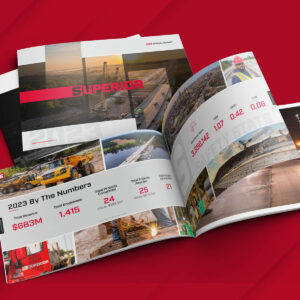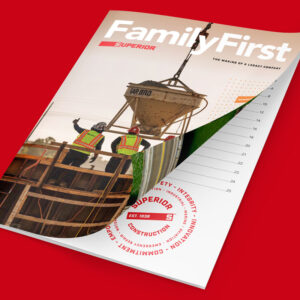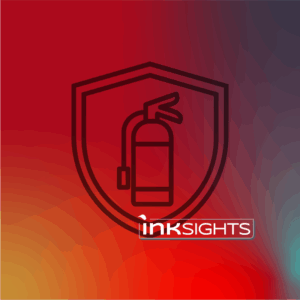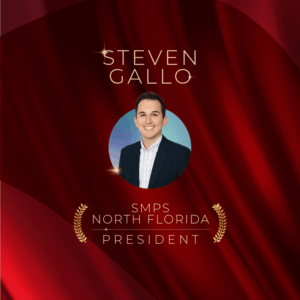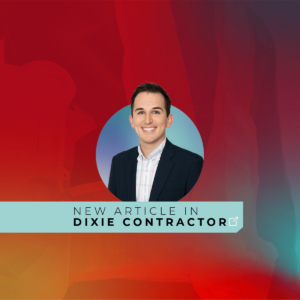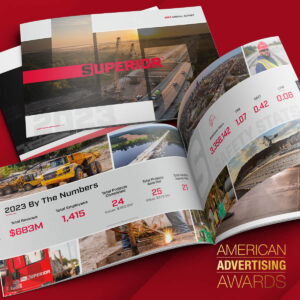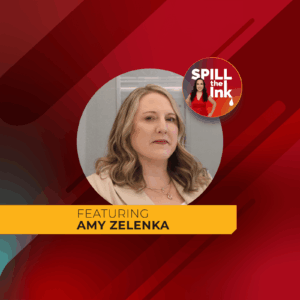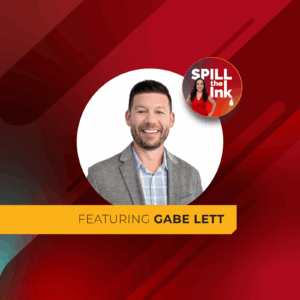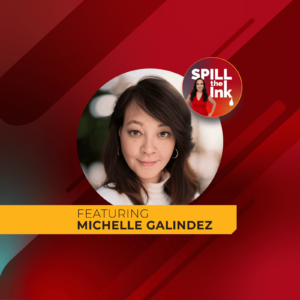
Inksights Blog : The Reputation Ink Blog
Why AEC Firms Can’t Rely on Silence and ‘No Comment’: The Case for Proactive Reputation Management
As a former reporter, I learned quickly that silence rarely serves those in the spotlight.
I recall attempts to interview or otherwise obtain a statement from a subject of a story — an embroiled commercial developer, a local executive or a city council member — only to be ghosted or given a dismissive “no comment,” as if sending me to voicemail or ignoring my knock at the door would make it all go away.
In reality, when an organization declined to comment on a story, that omission didn’t stop the coverage — it simply shaped it without their voice.
In today’s 24/7 online world, silence can be interpreted as indifference, avoidance or even guilt. And when your projects involve public infrastructure, tax dollars or community impact, “no comment” can be costly. The absence of communication leaves space for speculation, and that vacuum quickly fills with someone else’s version of the story.
But here’s what I’ve realized since moving from newsroom to boardroom: in the architecture, engineering and construction (AEC) industry, silence isn’t always intentional. It’s often institutional.
Most of these firms aren’t ducking reporters because they’re scared. They’re silent because no one inside the company knows who’s allowed to speak, what’s safe to say or how to say it. Legal wants caution. Operations wants focus. Marketing wants consistency. The result? Structural silence, not strategy.
That’s why “no comment” isn’t just bad optics; it’s a symptom of a bigger problem.
Why ‘No News’ Is Not Good News
Perception vs. Reality
In any crisis or controversy, perception is reality. When a company says nothing, stakeholders, the media and the public fill in the blanks. And the results are rarely flattering.
Research backs this up. A 2022 study published in the Journal of Management & Organization found that in times of crisis, silence doesn’t prevent speculation; it invites it. The authors note that “crises are socially constructed — stakeholders capture information from the environment and form a representation of reality in their minds about crises and their protagonists.”
In other words, when an organization withholds information, stakeholders, the media and the public fill in the blanks — and the results are rarely flattering. The study also found that the timeliness and credibility of a company’s response directly influence how trustworthy and reputable it is perceived to be, reinforcing that communication delays often cause greater harm than the original issue itself.
Even if you’re taking all the right actions internally, silence leaves room for doubt, especially in an industry where safety, environmental impact and public trust are non-negotiable. As one of our clients’ crisis plans states plainly: “In the absence of communication, fault is assumed.” That assumption can do more reputational damage than the original incident itself.
The Amplification Effect
Digital rumor cycles move faster than even the most efficient construction timelines. If mismanaged, a minor jobsite incident can spiral and reach regional news, LinkedIn feeds and community Facebook groups within hours. Without a visible, credible voice from your firm, speculation compounds, creating a “secondary crisis” that overshadows the real one.
And by now, we all know why, thanks to extensive research and our own lived experience: social media algorithms thrive on outrage and speculation, meaning that if your firm doesn’t speak up quickly, others — from industry influencers to national media outlets — will happily do it for you.
“Silence online is no longer silence at all; it’s an algorithmic amplifier for everyone else’s opinions.”
AEC-Specific Stakes
AEC projects face unique reputational risks because they inherently live in public view. Schedule delays, cost overruns or safety investigations affect real communities, not just balance sheets. In particular, municipal and institutional clients, especially those spending taxpayer dollars, expect and demand transparency from their partners.
AEC firms also operate in long-tailed relationships, where reputation compounds across years of bids and partnerships. One poorly managed public incident can ripple far beyond a single project, potentially influencing future selections, prequalifications and teaming decisions.
Conversely, firms known for candor and accountability often gain an advantage when public owners are weighing risk. In public procurement systems, modeling studies find that when reputation is an explicit factor in bid evaluation, contractors with established records of accountability often outcompete lower-cost rivals. Likewise, a Harvard Business School–backed experiment found that transparency into internal practices significantly increased stakeholders’ perceptions of trust, corporate ability and favorability — the same qualities that municipal, healthcare or higher-ed clients look for when vetting project partners.
Even private-sector clients are paying attention. Developers, healthcare systems and higher-ed institutions are increasingly sensitive to community perception. They want partners who understand that communication and credibility are extensions of safety and quality.
Ultimately, the difference between being seen as accountable versus evasive can determine whether your firm is invited back to bid at all. In an industry built on trust and repeat work, that’s not just a PR issue — it’s a business development issue.
Lessons From the Field
As a journalist, I saw firsthand how the tone and timing of a statement could make or break public trust. In crises, the difference between transparency and defensiveness was often measured in hours, not days.
The Cost of Saying Too Little, Too Late
A recent example tangential to the AEC world illustrates this perfectly: the Richmond water crisis of January 2025. When a mechanical failure at a local treatment plant left thousands of residents without reliable water service, the breakdown wasn’t just physical — it was communicative.
City leaders were slow to alert state regulators, delayed updates to residents, and lacked visible leadership presence in those crucial early days. The resulting after-action report didn’t mince words: inconsistent internal structures and a lack of communication protocols turned a technical problem into a public confidence crisis.
In other words, the mechanical failure was the spark — but the communications failure was the wildfire.
Now, imagine the opposite: a city or firm that “shows its work.” One that issues regular updates, acknowledges what it doesn’t yet know, and puts an informed, empathetic spokesperson front and center. Even without all the answers, that organization projects accountability and control.
I witnessed this dynamic countless times as a reporter — two companies facing similar circumstances, yet their public outcomes diverged dramatically because one remained visible while the other remained silent.
“The same holds true in the AEC world: when something goes wrong on a jobsite, your firm’s first message doesn’t have to be perfect, but it does have to exist.”
Bridging Statements: The Middle Ground
AEC firms don’t need to choose between over-sharing and stonewalling. Bridging statements offer a middle ground, a way to respond with empathy and control, even when facts are still emerging. These short, deliberate pivots help your spokesperson acknowledge a question, redirect to a key message and project transparency without overexposure.
Think of bridging as a verbal blueprint: a framework that ensures you’re communicating what you can say while reinforcing your firm’s credibility and priorities.
Examples include:
- “We’re still gathering information, but what we do know is…”
- “I can’t comment on the investigation, but I can share that safety remains our top priority.”
- “While we work to confirm details, our focus right now is supporting our team and keeping the public informed. In the meantime, what I can tell you…”
What makes these statements powerful isn’t necessarily their wording but their intent. Each one:
- Acknowledges reality instead of dodging it
- Signals accountability by showing up quickly and calmly
- Redirects the conversation toward a constructive, credible message
This technique can be the difference between being seen as evasive or as empathetic, which is especially critical in AEC, where technical details may take days to verify but public attention spans last minutes.
Effective bridging also depends on preparation. Media-trained spokespeople don’t improvise these phrases in the heat of the moment; they rehearse them long before a crisis hits. Some firms even build them into their crisis-communications plans alongside holding statements and internal talking points.
Ultimately, bridging is less about controlling the story and more about staying part of it. It’s how you demonstrate leadership when the full picture is still coming into focus and how you could preserve years of goodwill in just a few measured sentences.
Silence Before the Storm
Silence isn’t just a crisis behavior; it’s a culture.
Most AEC firms are quiet long before anything goes wrong. Their websites are digital ghost towns: project sheets, leadership bios and often little else. Executives rarely post on LinkedIn. The brand is technically sound but publicly invisible.
That invisibility is its own risk. When your firm is unknown, it’s undefended. You can’t earn the benefit of the doubt in a crisis if no one knows your voice beforehand. Think of proactive visibility as building the foundation of your reputation long before you pour the slab.
Part of the issue here is cultural. AEC firms are built by doers, not talkers — professionals who let their work speak for itself. But in today’s world, your work doesn’t speak unless you give it a microphone. The same humility that builds strong project teams can inadvertently build weak public profiles.
When firms only speak after they’re forced to (i.e., after a delay, controversy or misunderstanding), even sincere statements can sound like spin. That’s because the absence of a consistent public voice makes it harder for audiences to distinguish between genuine transparency and damage control.
The solution isn’t noise for noise’s sake. It’s strategic visibility. It’s about demonstrating how your firm’s expertise, safety record, community impact and leadership values show up before the spotlight finds you. Regular thought leadership, community storytelling and visible executive engagement are the insurance policies that help people trust what you say when it really matters.
Build Reputation Capital Before You Need It
Public relations isn’t about a cosmetic facade for your brand but a matter of its structural reinforcement. In the same way engineering models predict load-bearing stress, a communications system predicts pressure response.
Here are four ways AEC marketers can build a firm that’s engineered for credibility:
1. Document Your Values Through Thought Leadership
Use your owned channels (e.g., your website, blog and LinkedIn) to demonstrate integrity, innovation and community impact. Publish lessons learned, not just ribbon-cuttings. That digital paper trail becomes evidence of character when scrutiny arrives.
2. Establish Media Relationships Now
The worst time to meet a reporter is when they’re calling about a crisis. Instead, build familiarity early by offering expert commentary, sustainability insights or workforce development perspectives. Credible relationships become your reputation scaffolding. When journalists know you and trust your team, they’re more likely to seek your perspective, ensuring balanced coverage when it matters most.
3. Train Your Internal Team
Your reputation is only as strong as your frontline. Everyone, from the front desk to field supervisors, should know what to do if approached by the media. Treat communication drills like safety drills: run them, test them, refine them. Teach staff how to redirect inquiries to your designated spokesperson and why this consistency matters. (We’ve even recommended simulating “reporter-on-the-jobsite” drills to test readiness.)
4. Create Holding Statements in Advance
Draft templated responses for your most likely scenarios (safety, weather, environmental or HR-related) and have them pre-approved by leadership and legal. Of course, these can always be refined and tailored to a specific situation in the moment, but doing this before the storm hits collapses the lag between crisis and clarity. Pre-approved statements mean your team can respond within minutes, not hours, reducing the risk of misinformation taking hold.
More than PR tactics, the above strategies are safeguards that form the foundation of a solid crisis readiness plan. If your firm doesn’t yet have such a plan, you’re not just unprepared — you’re gambling with your reputation.
Silence Can Create Secondary Crises
Silence doesn’t just fail to protect reputation. It can actually make things worse, both within and outside your organization.
The External Crisis That Didn’t Have to Happen
A project delay or workplace injury might fade quickly with transparent communication. But if the public perceives a cover-up — or if the story unfolds without your input — you may face a “secondary crisis” that overshadows the original event.
“In many cases, repairing trust after silence costs more time, money and goodwill than addressing the problem honestly from the start.”
As with construction safety, the best crisis mitigation is prevention — and prevention starts with preparation and communication.
When Teams Go Quiet, Fear Fills the Void
Silence affects more than public perception, though. It destabilizes teams. When employees hear nothing from leadership during a crisis, they fill the gaps themselves. Rumors spread through job trailers, texts and Teams chats. Misinformation multiplies internally long before the media ever calls.
Proactive internal communication (even a short “here’s what we know and how we’ll update you” note) builds unity and prevents speculation. In the absence of information, fear becomes the loudest voice on the crew.
Speak Up to Build Trust
Silence feels safe because it’s familiar. However, in the AEC world, where almost every project is subject to public scrutiny, silence isn’t safety — it’s surrender.
The firms that thrive aren’t the ones who never face crises, of course; they’re the ones whose openness turns those moments into proof of reliability. But proactive communication doesn’t mean oversharing or spinning — it means showing that your firm values people, safety and integrity more than optics.
Your reputation is your most valuable project, one of your most complex builds. Protect and reinforce it by speaking up before others do it for you.
Does your firm have a crisis communication plan in place? Check out this recent case study to see how one of our clients communicated urgently yet empathetically in the wake of a natural disaster.
Related AEC, Architecture, Construction and Engineering. Content
Maximizing Employee Engagement Through a Compelling Employee Newsletter
Reputation Ink | Jun. 24, 2025
Rebuilding a Construction Company’s Brand With Impactful Visuals
Reputation Ink | Jun. 24, 2025

